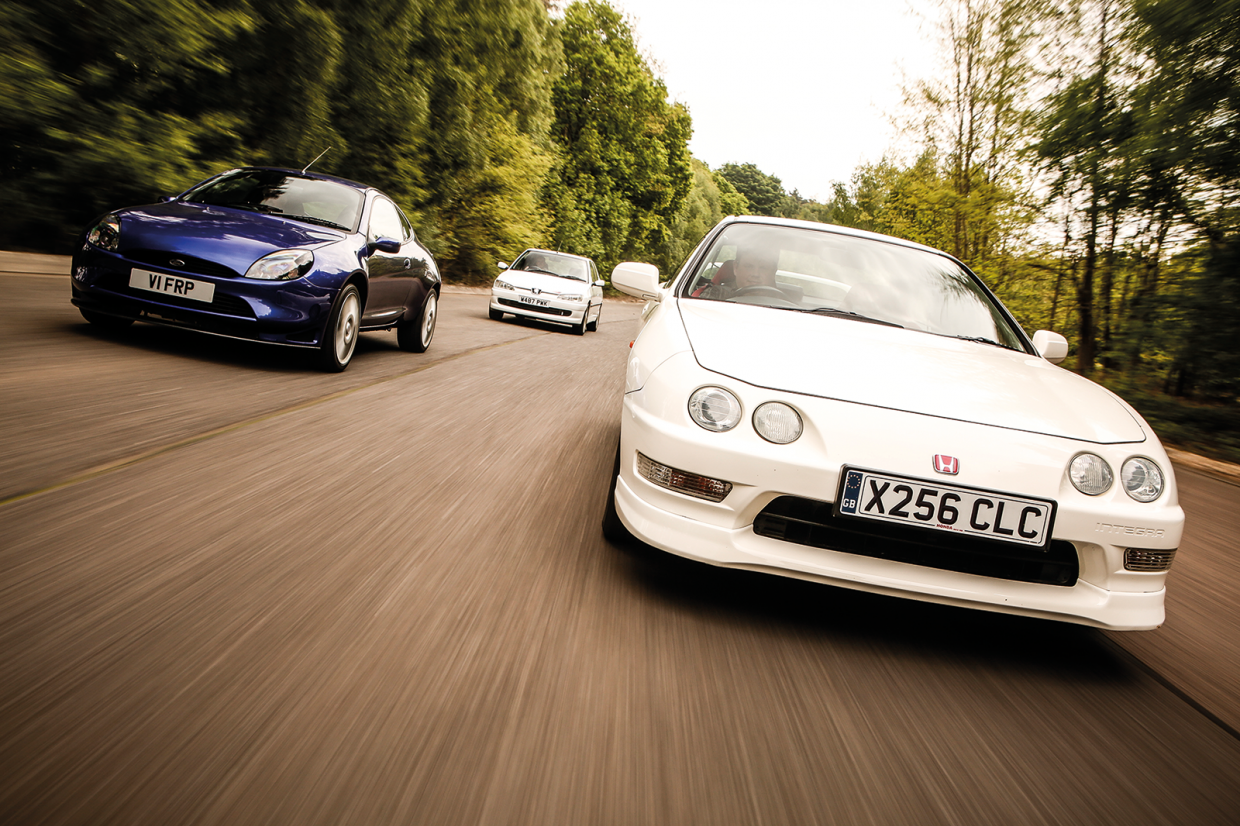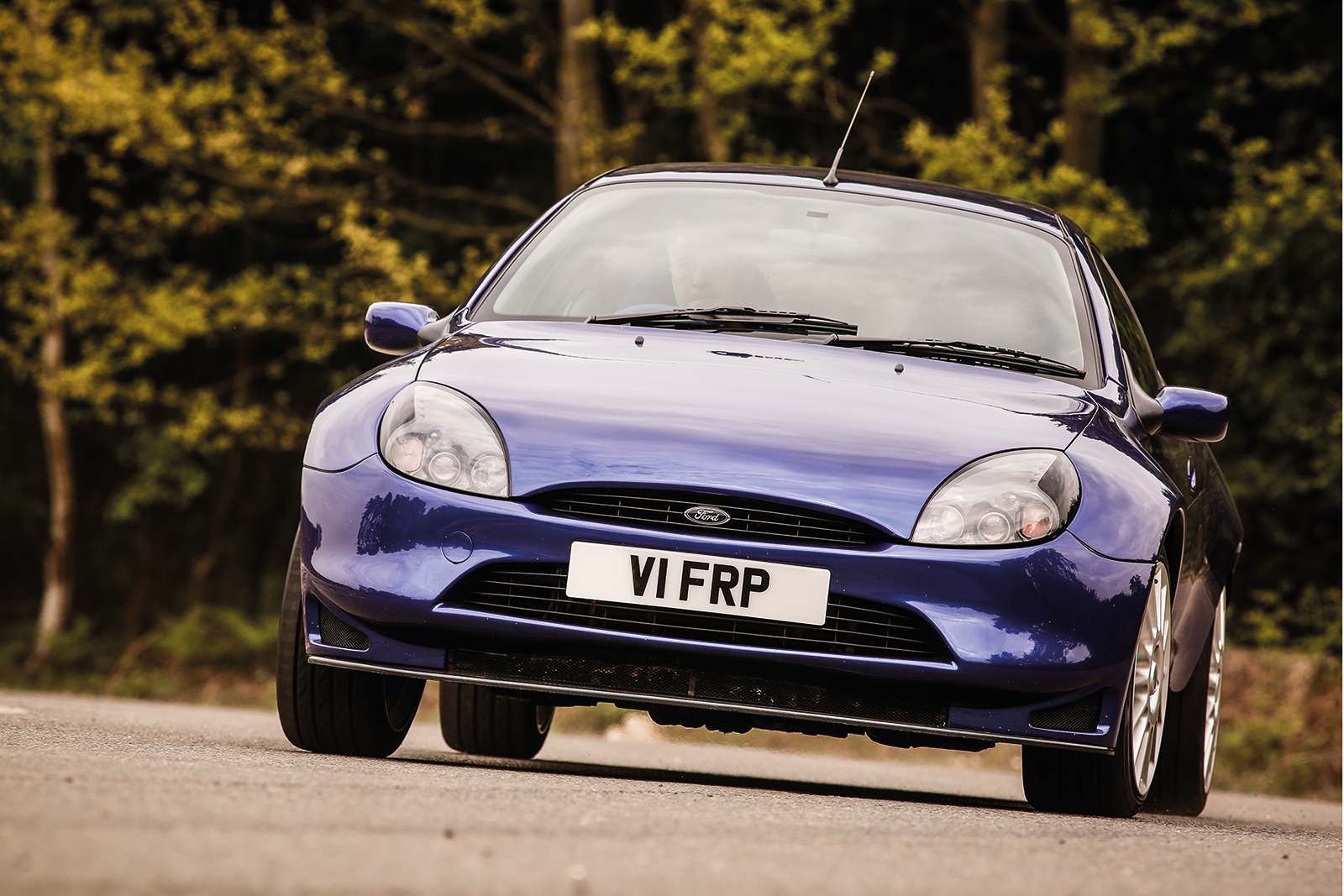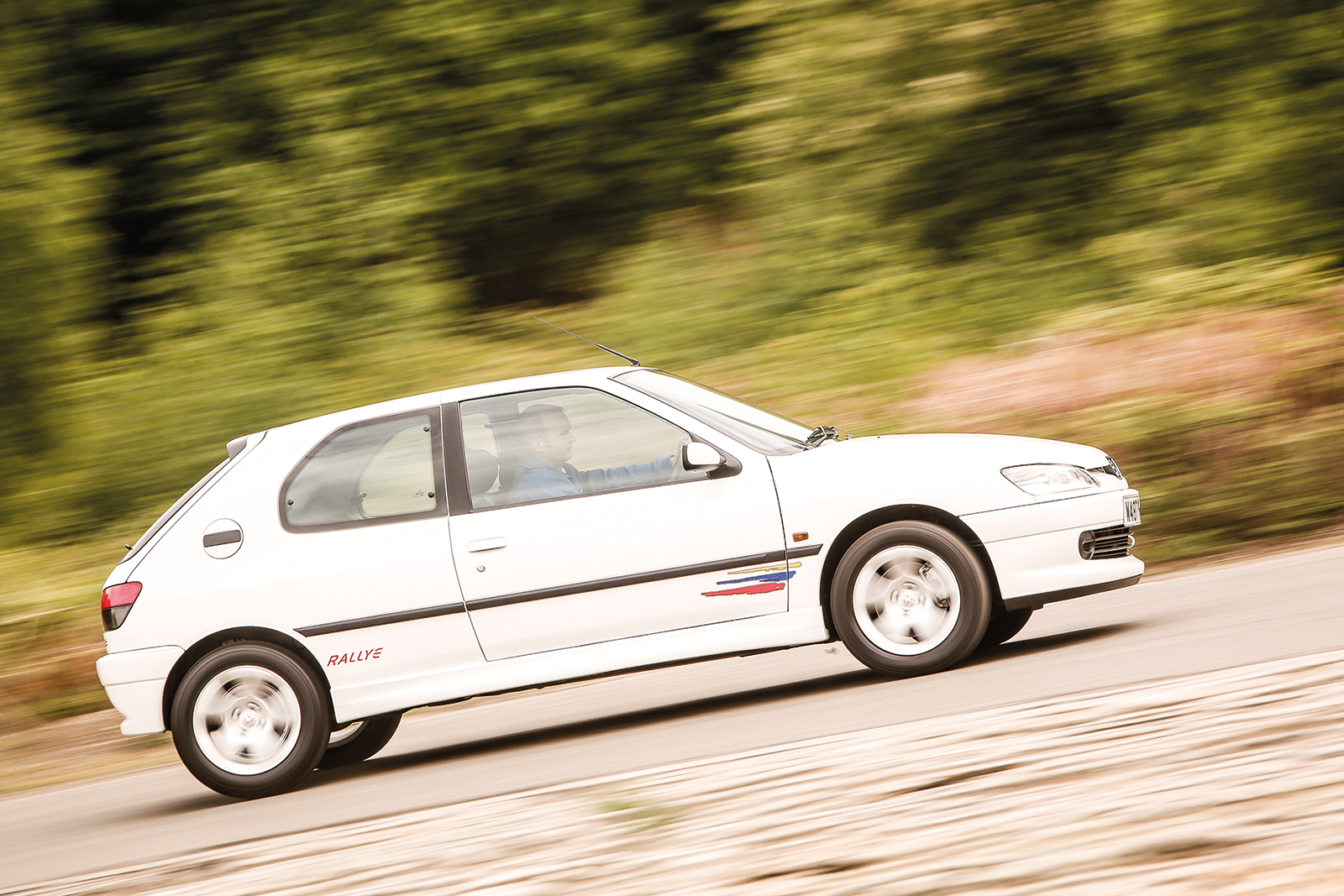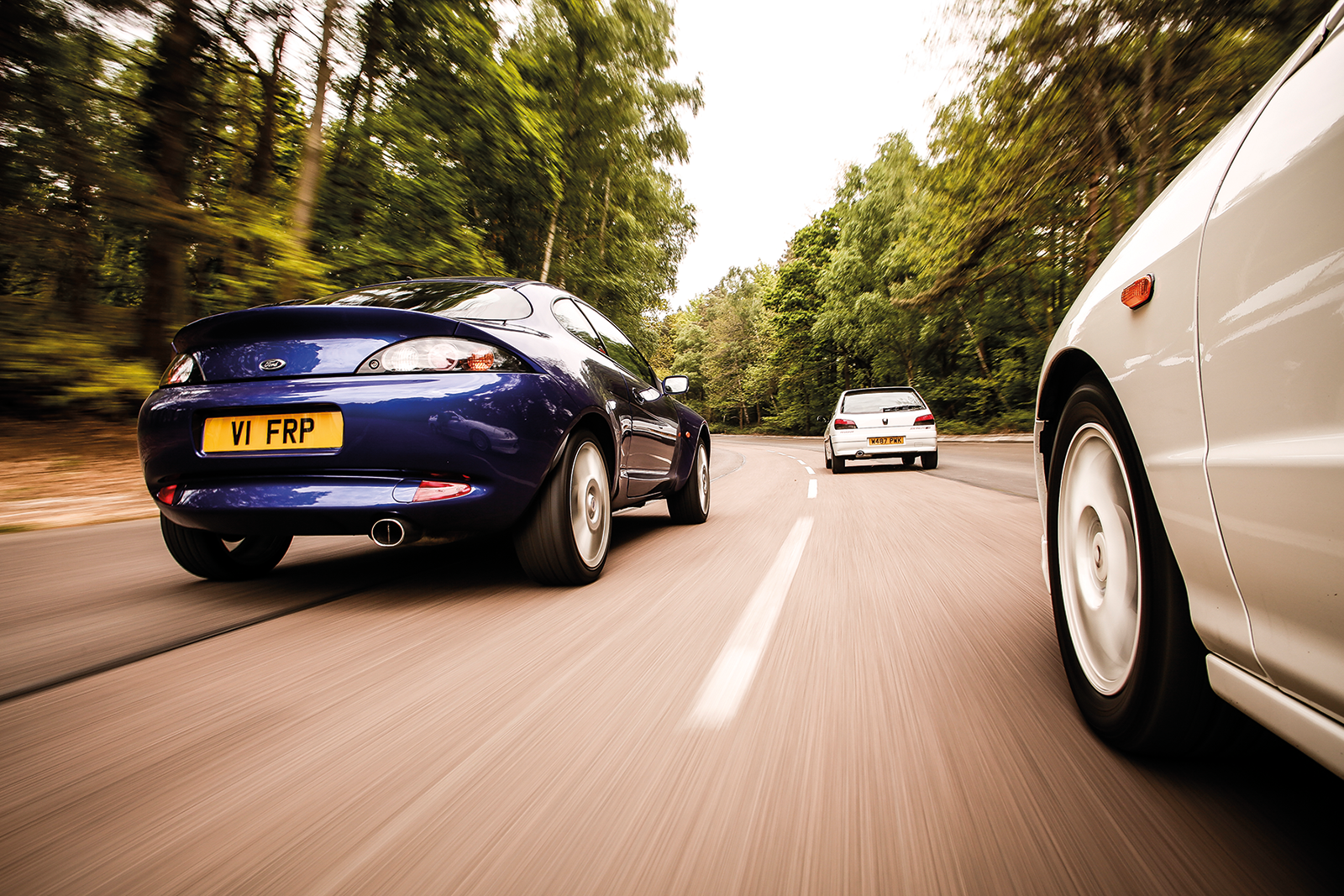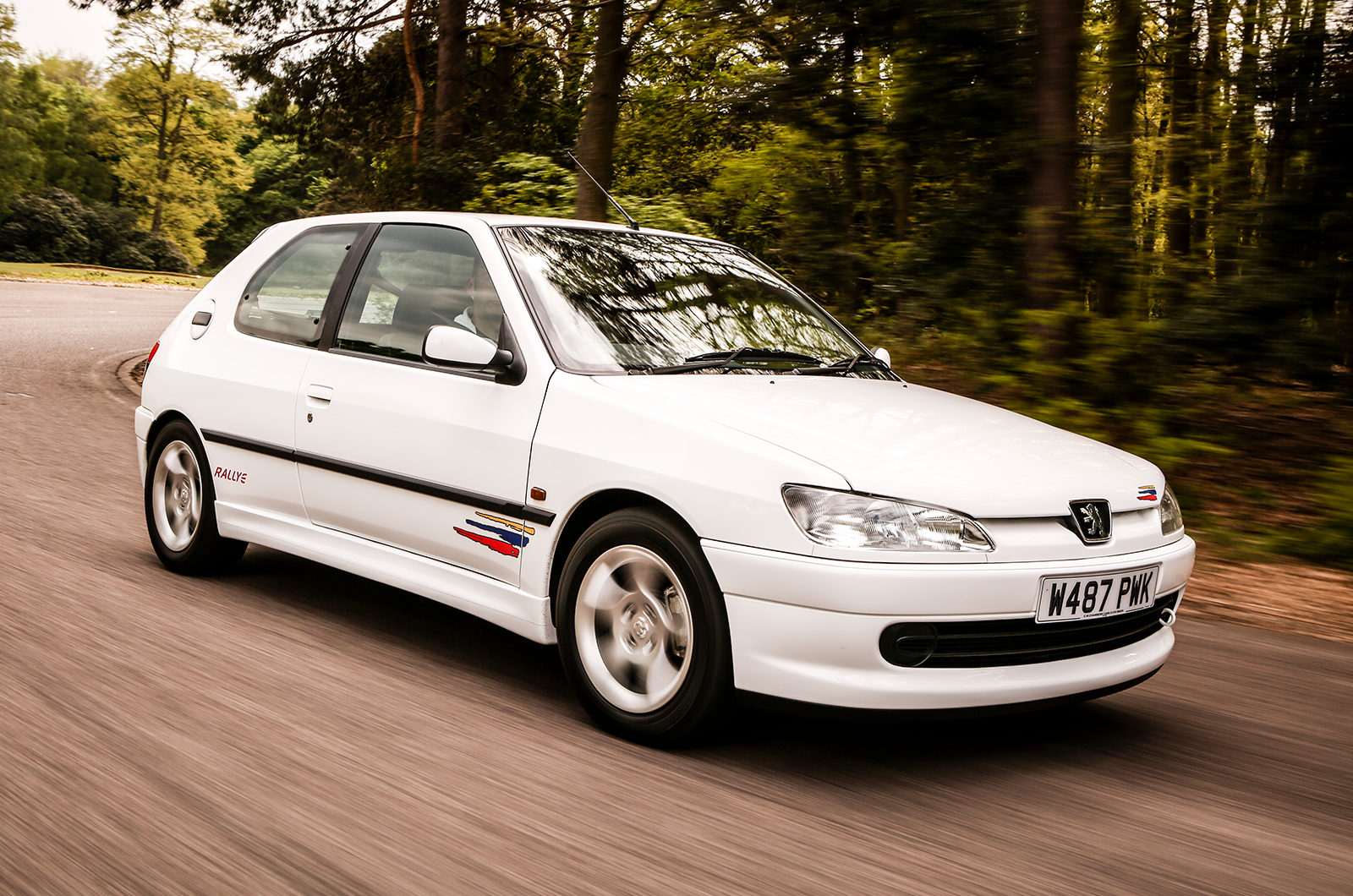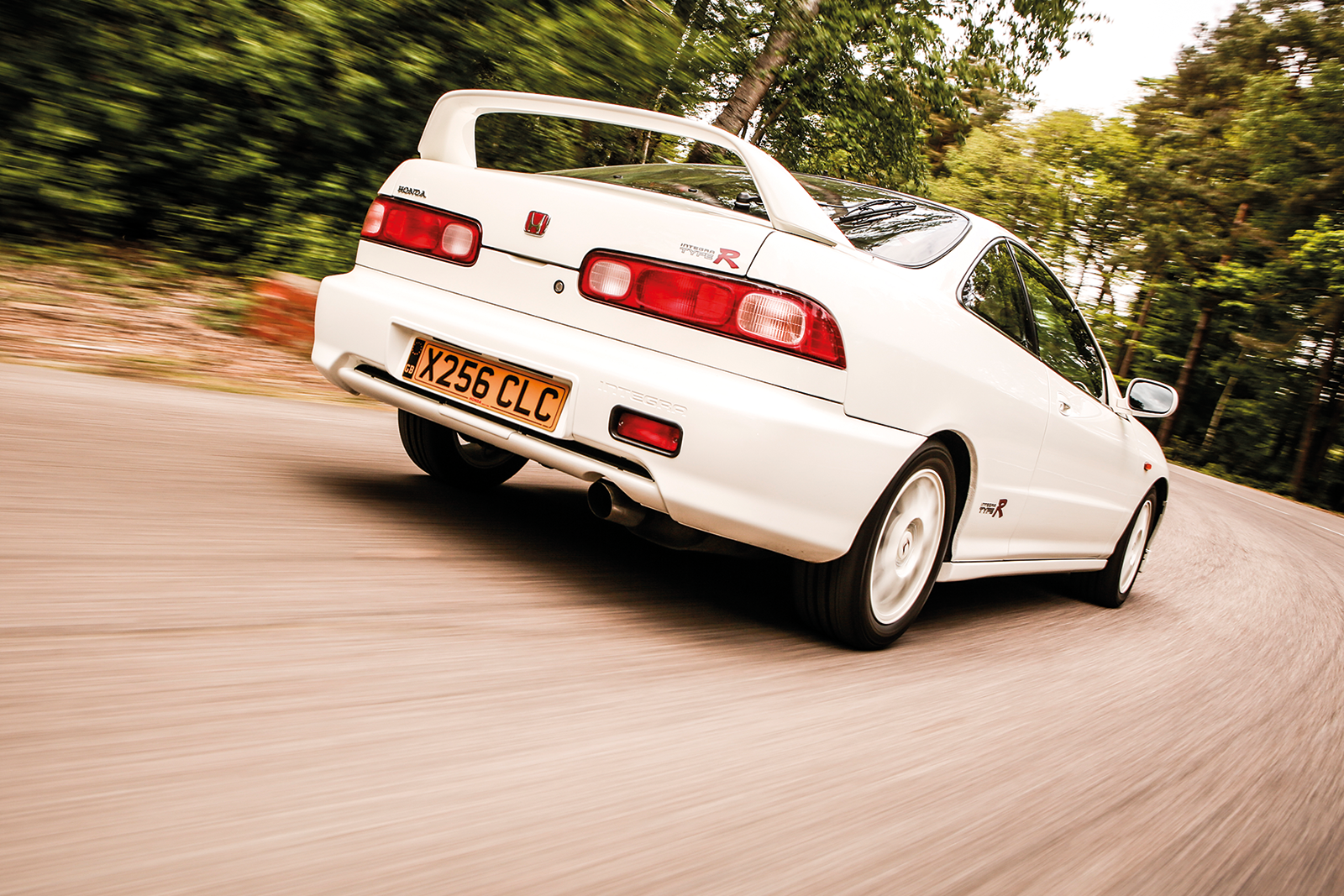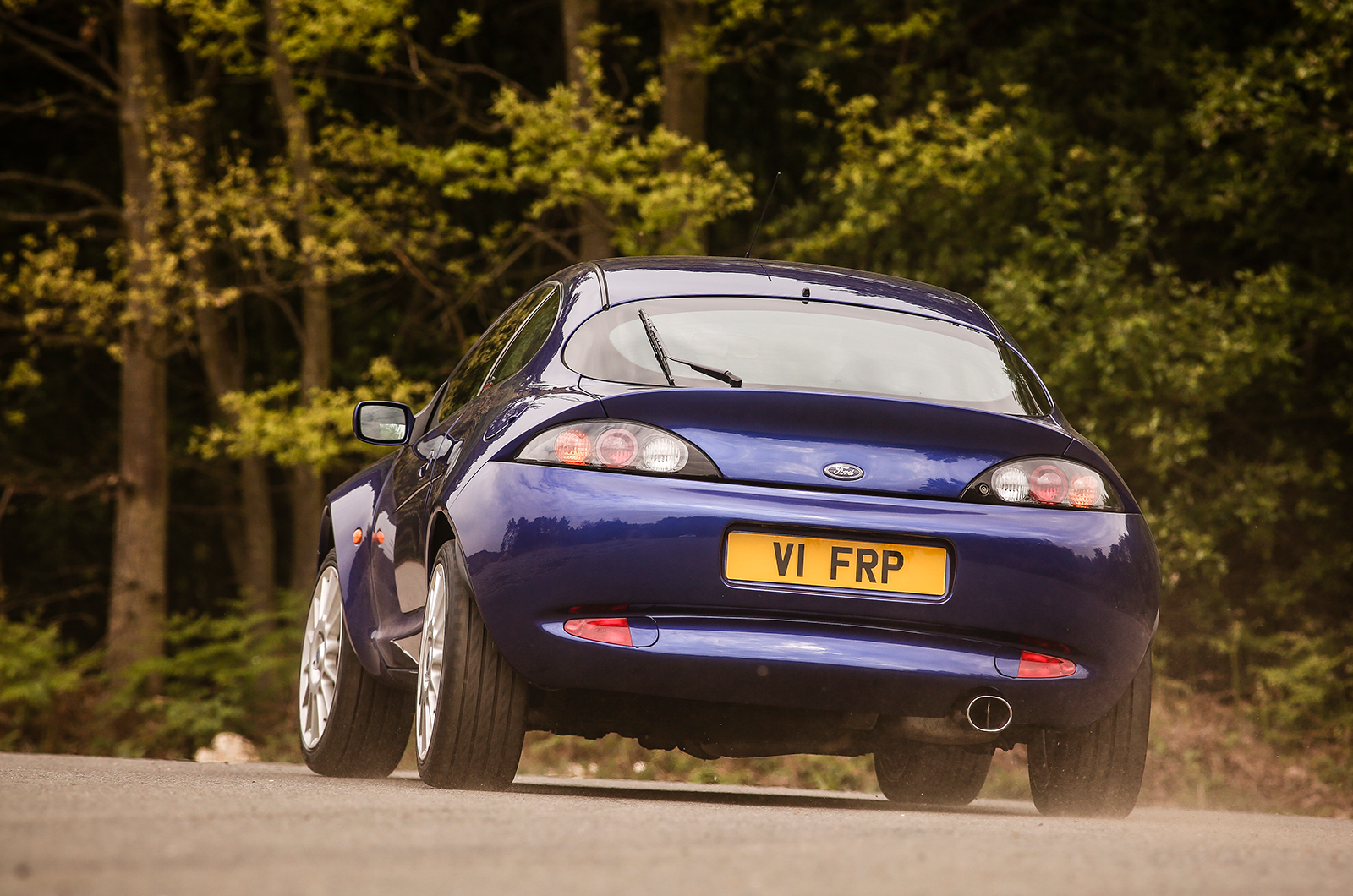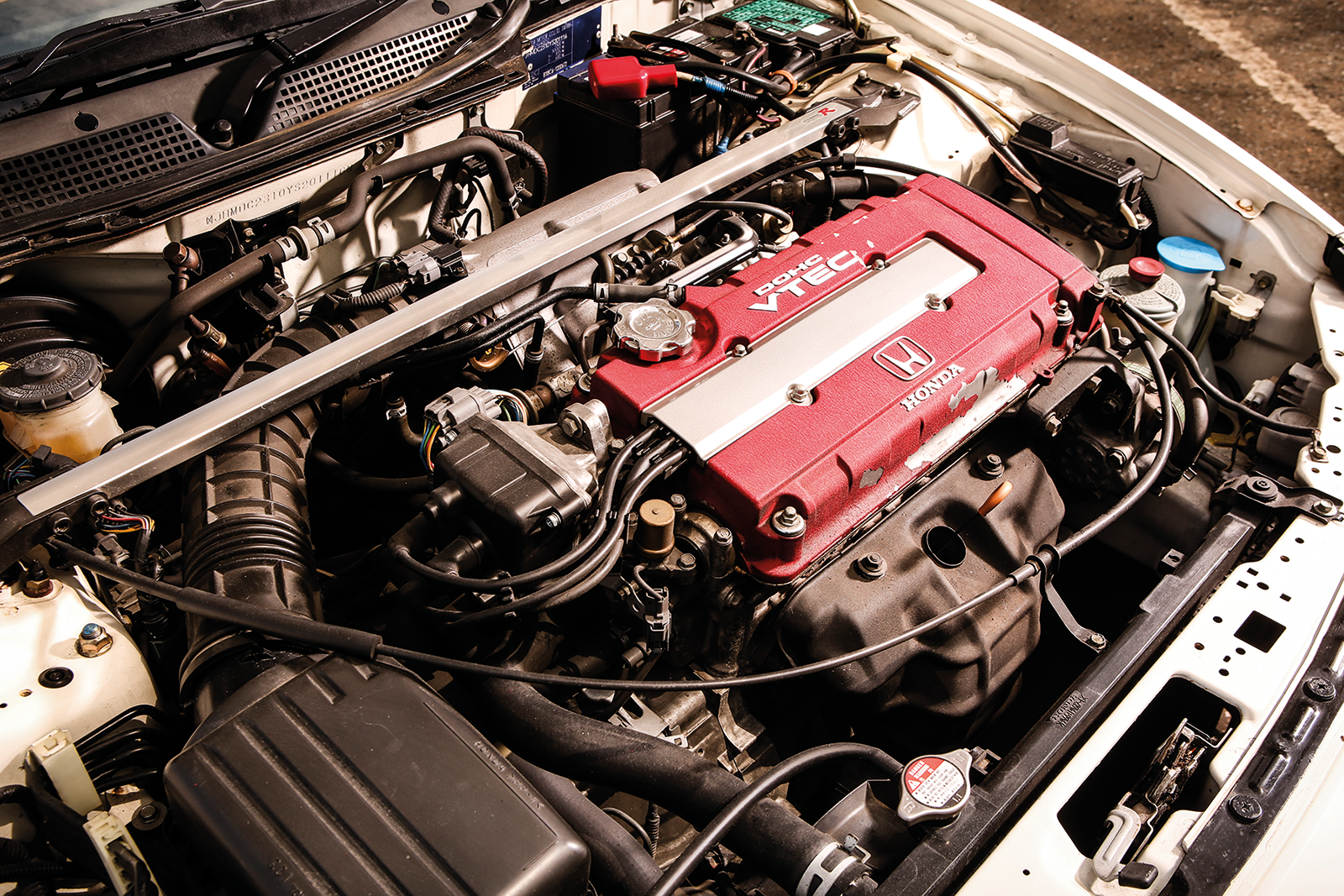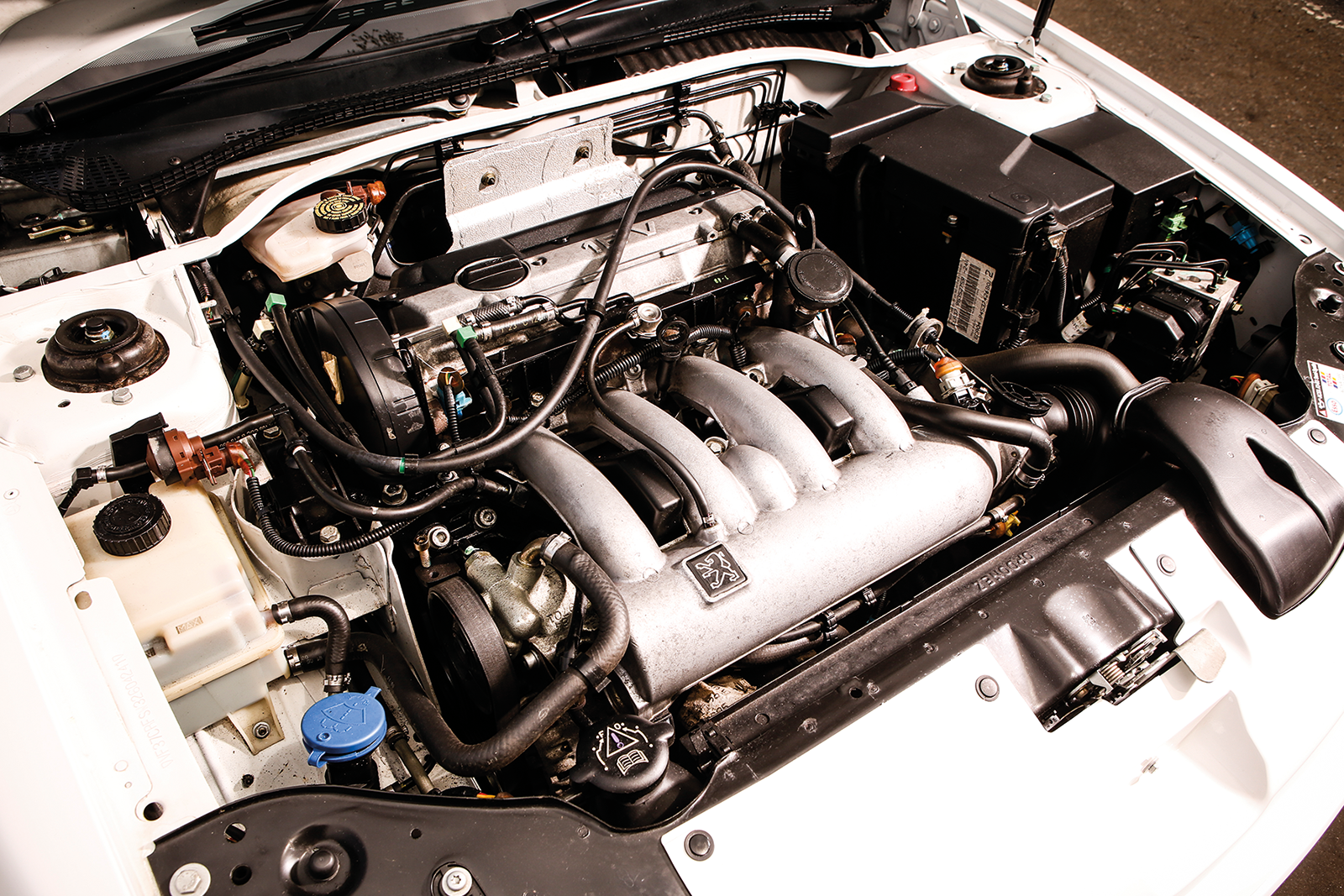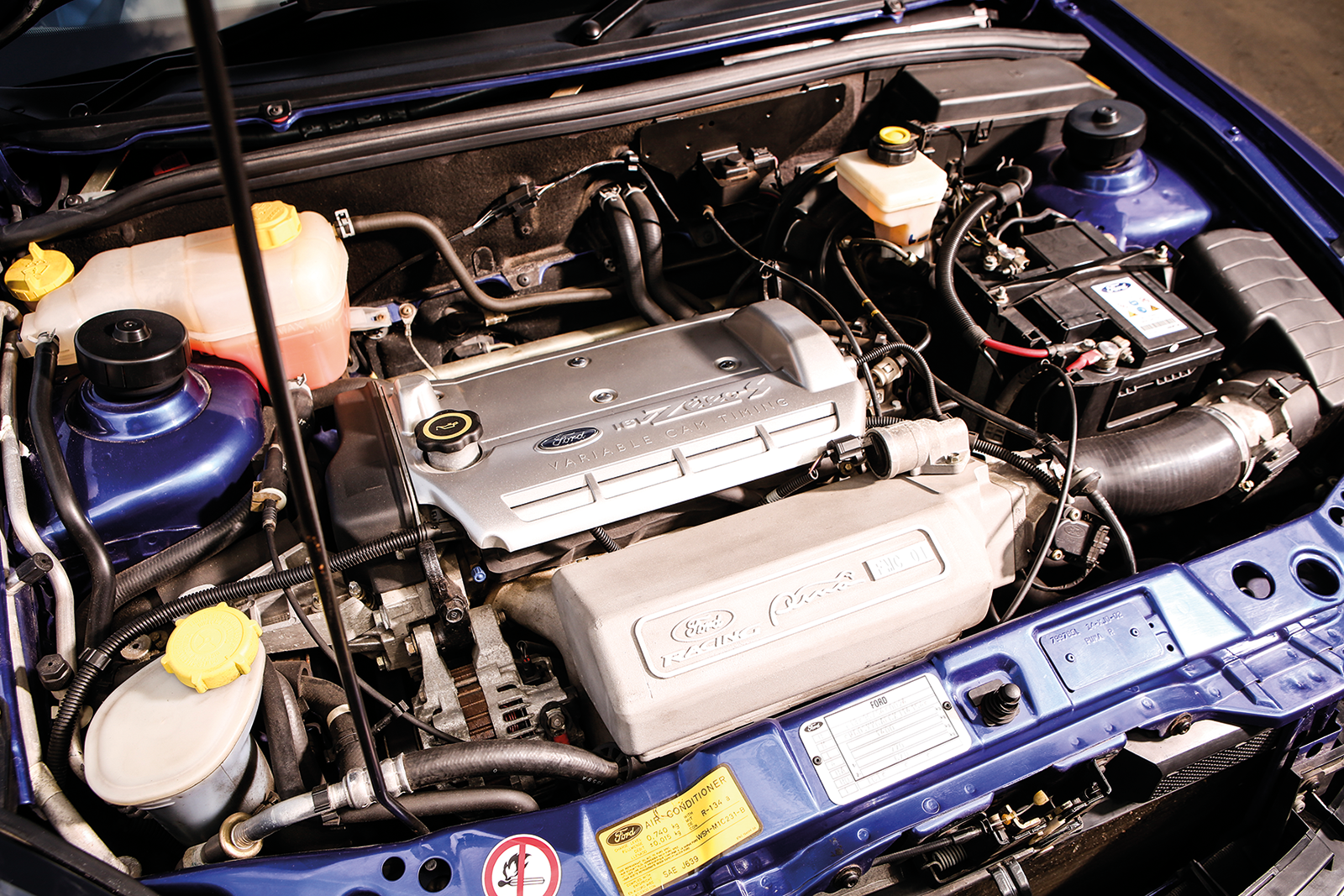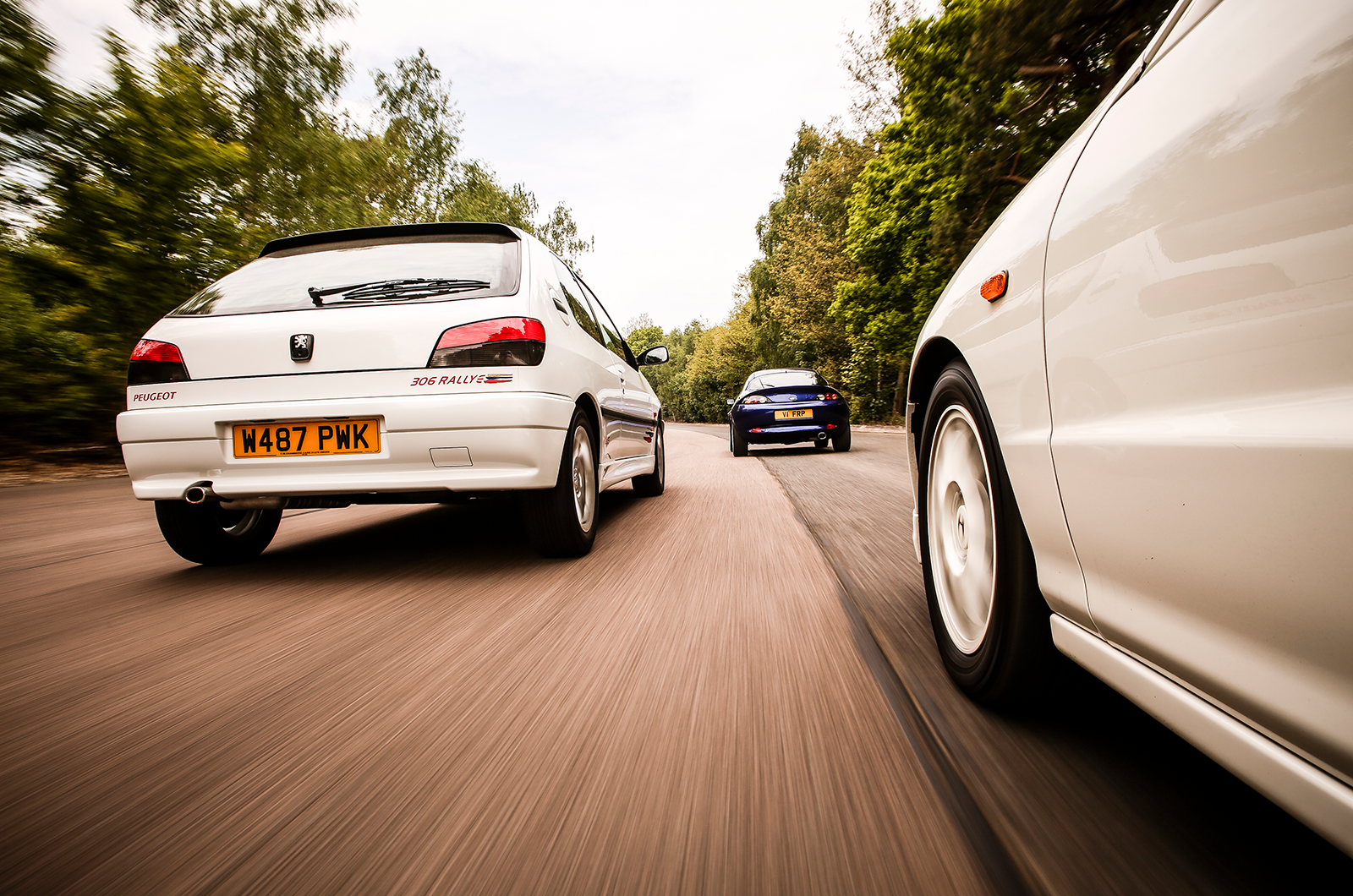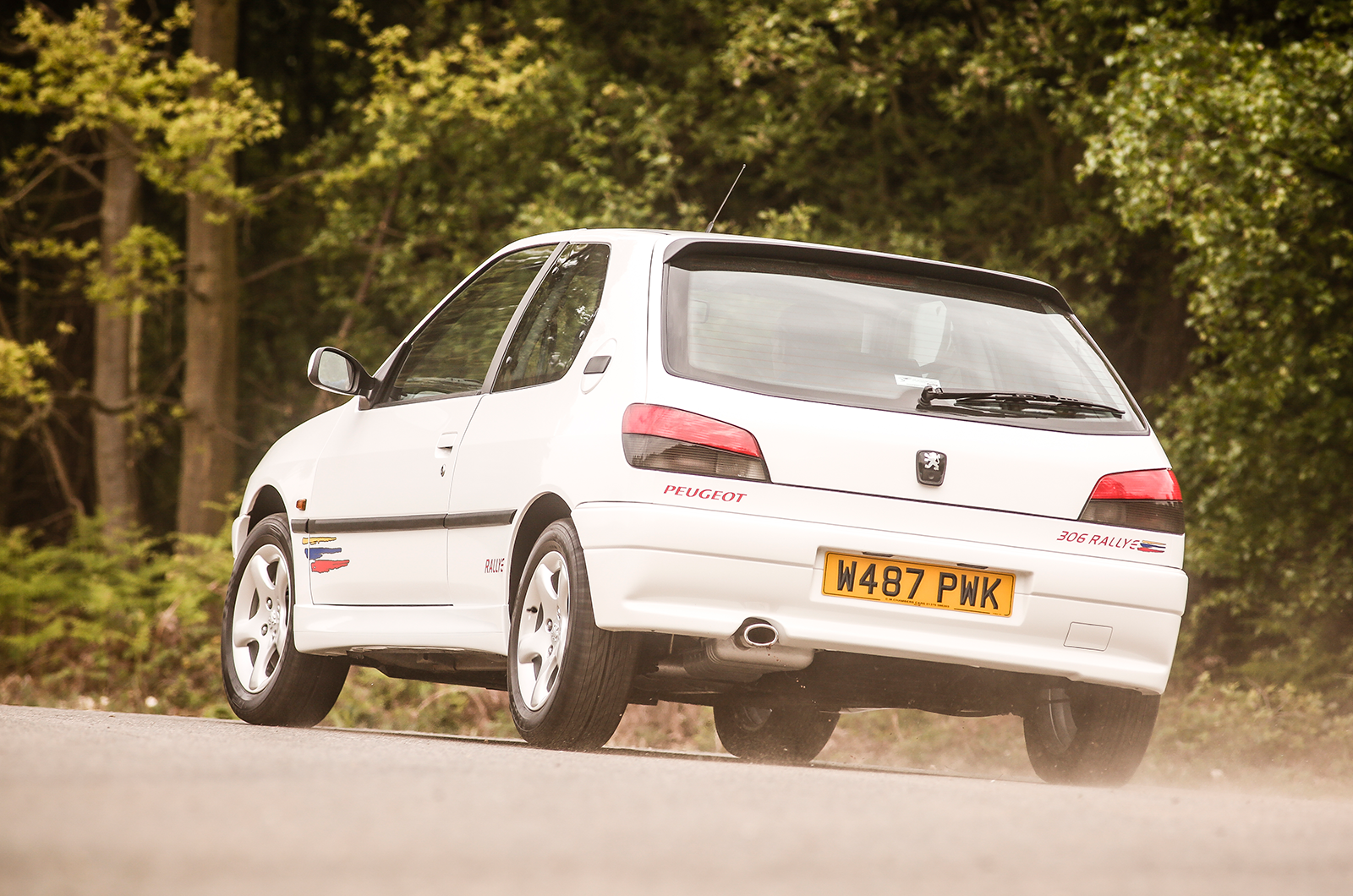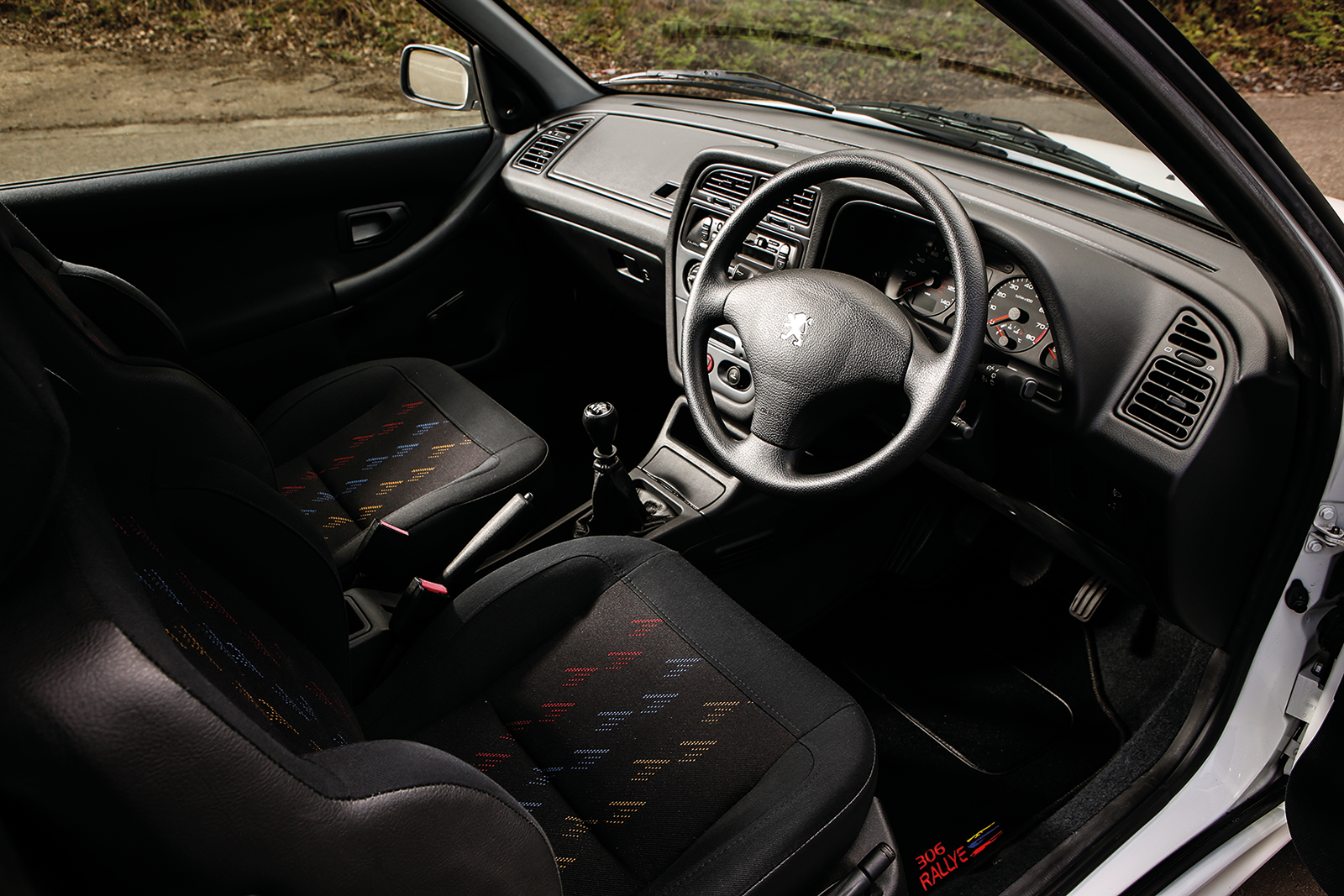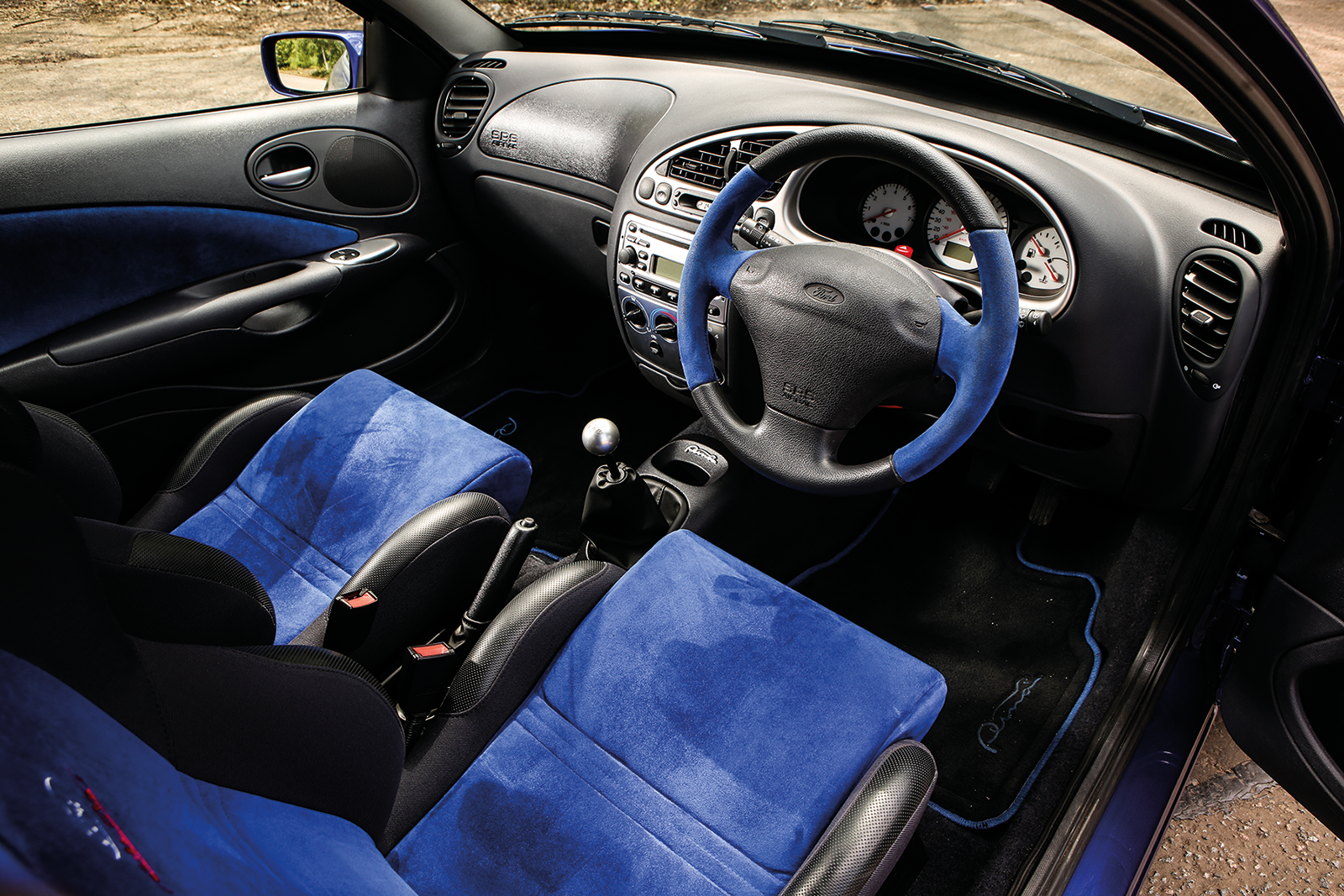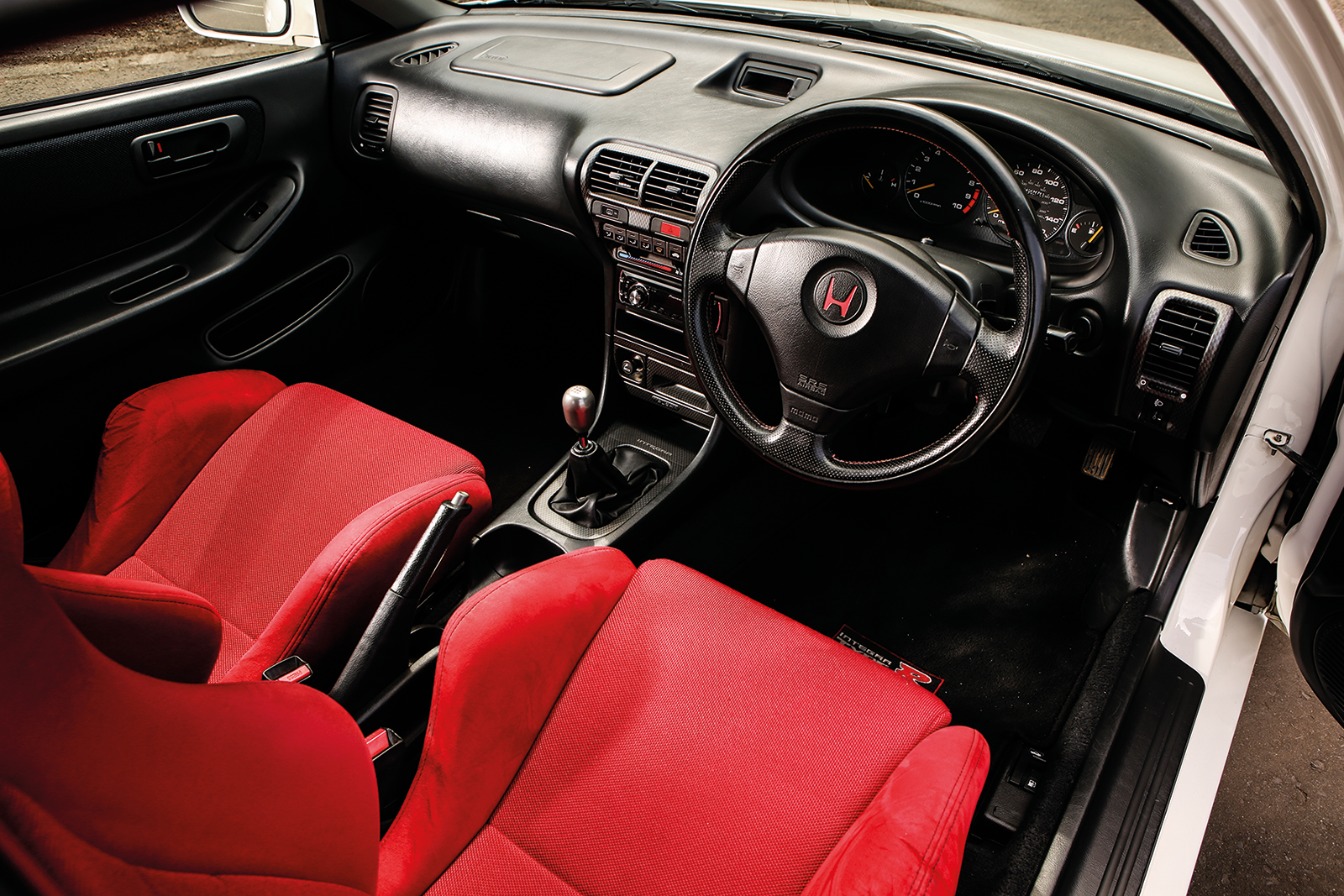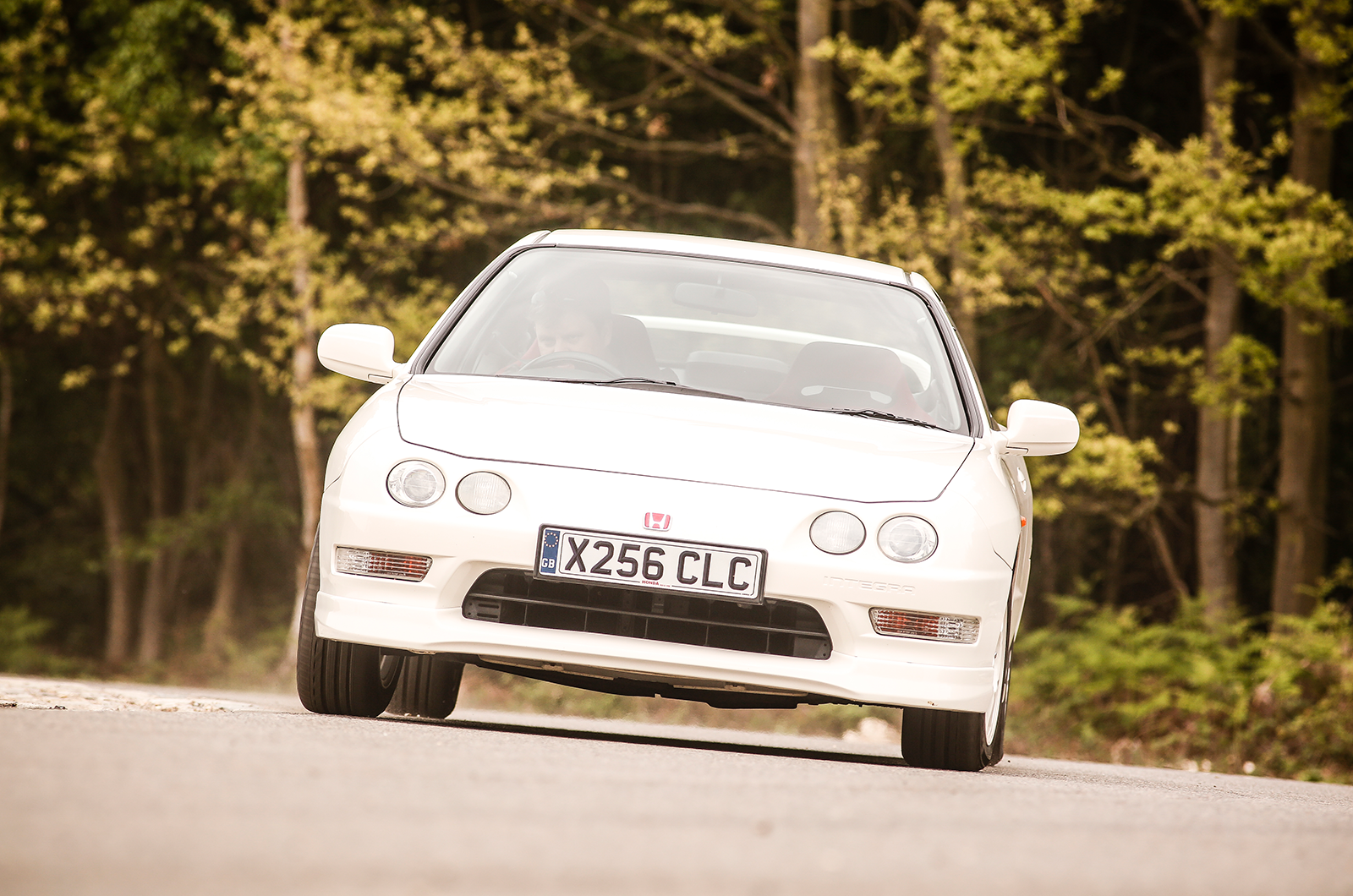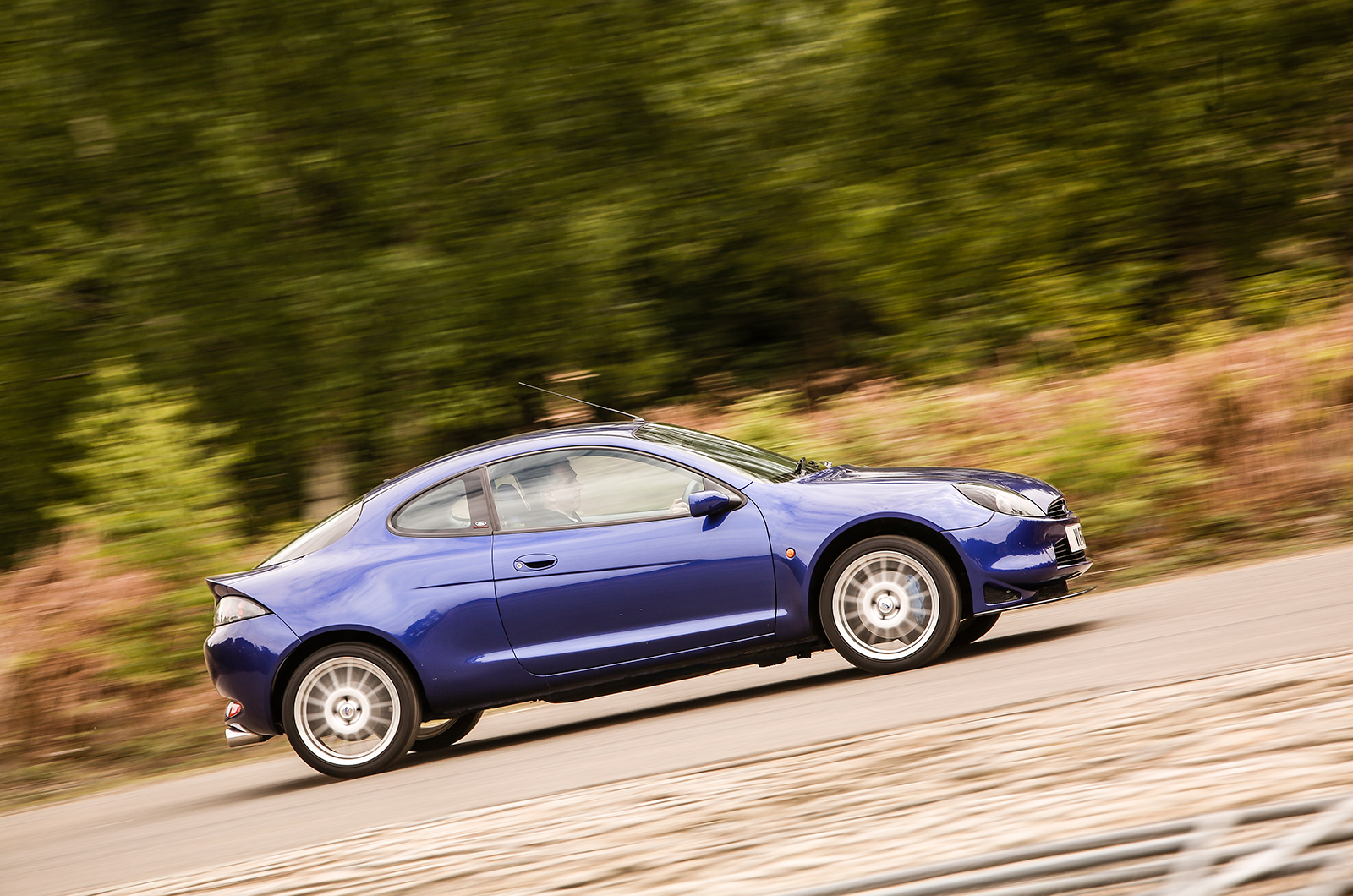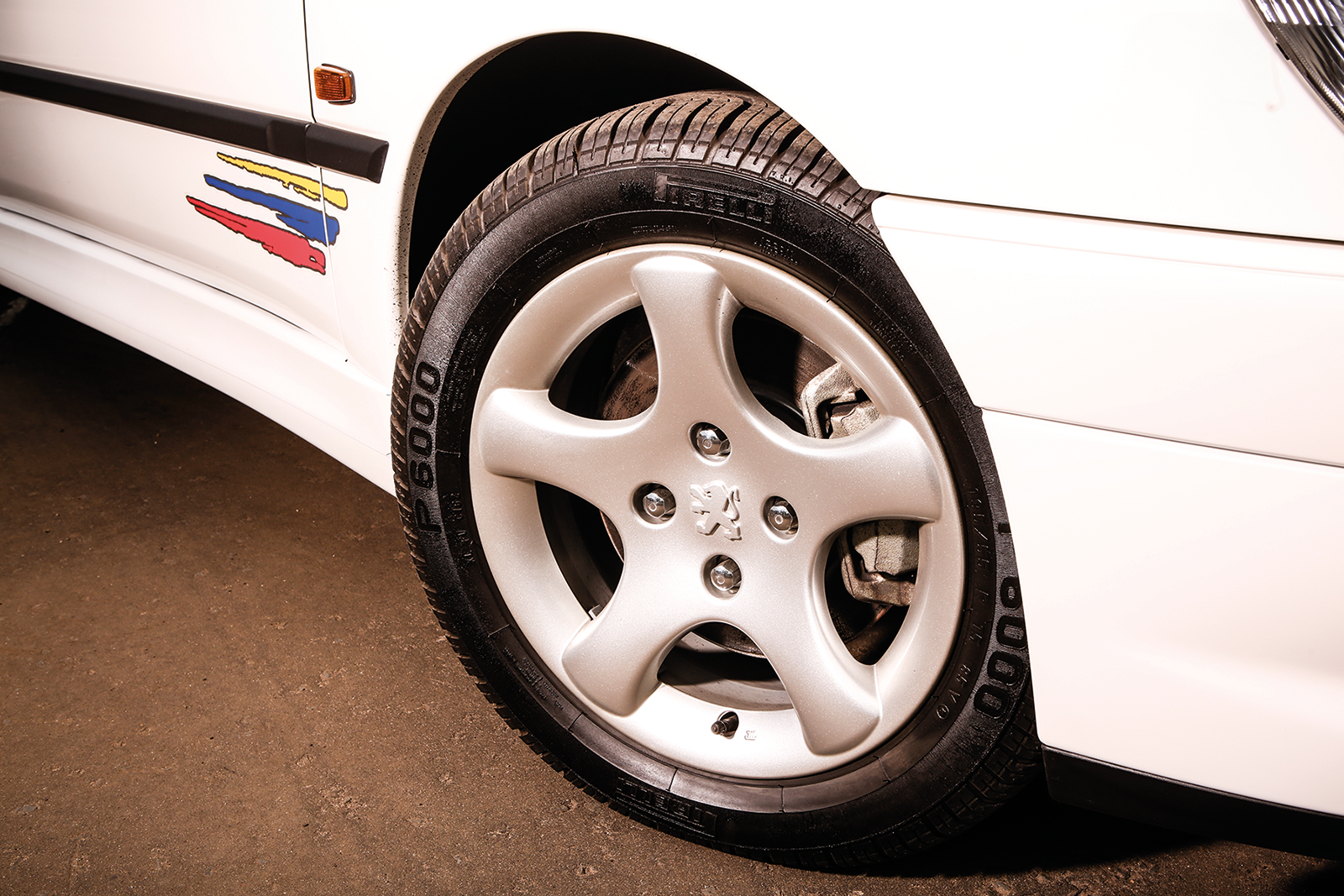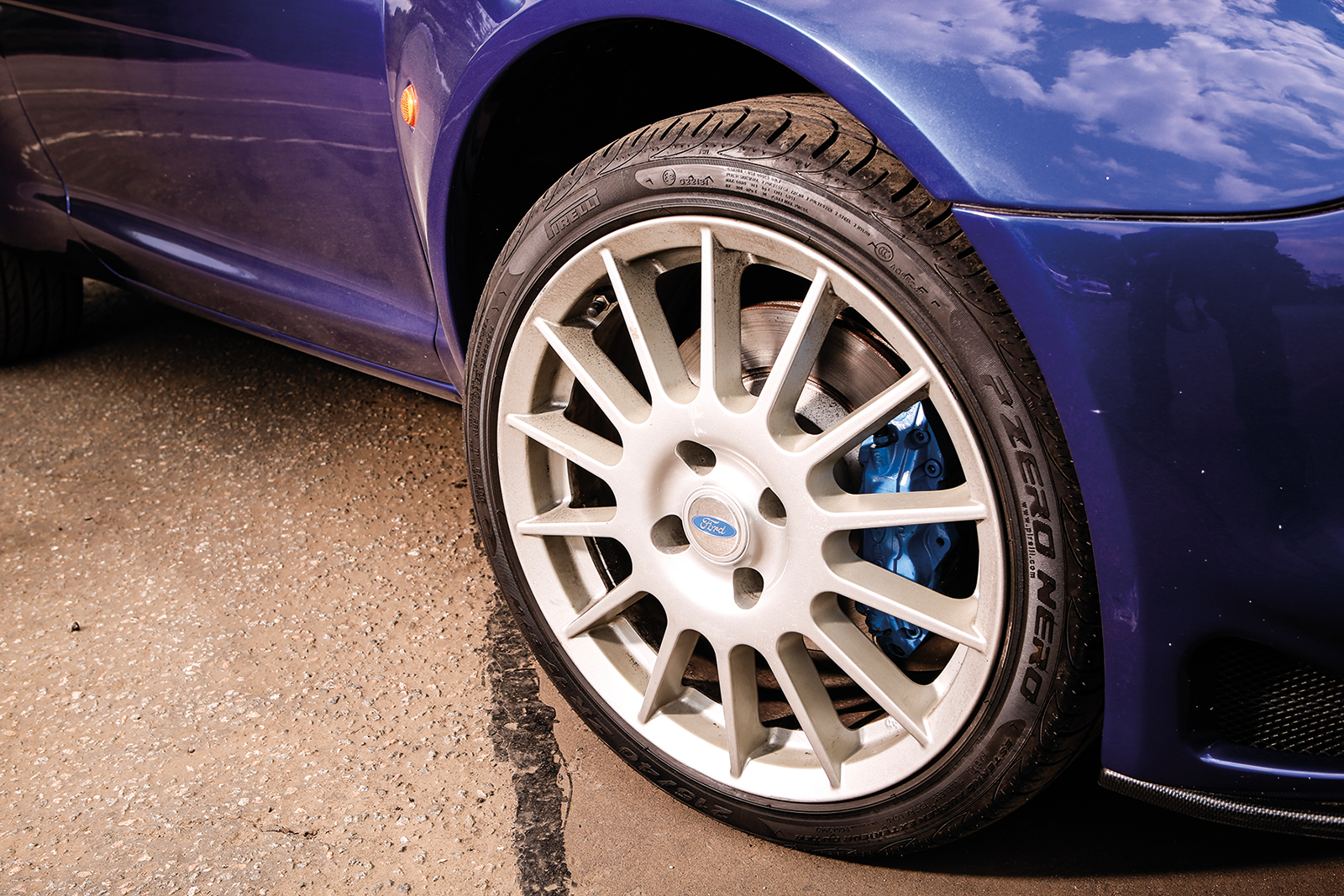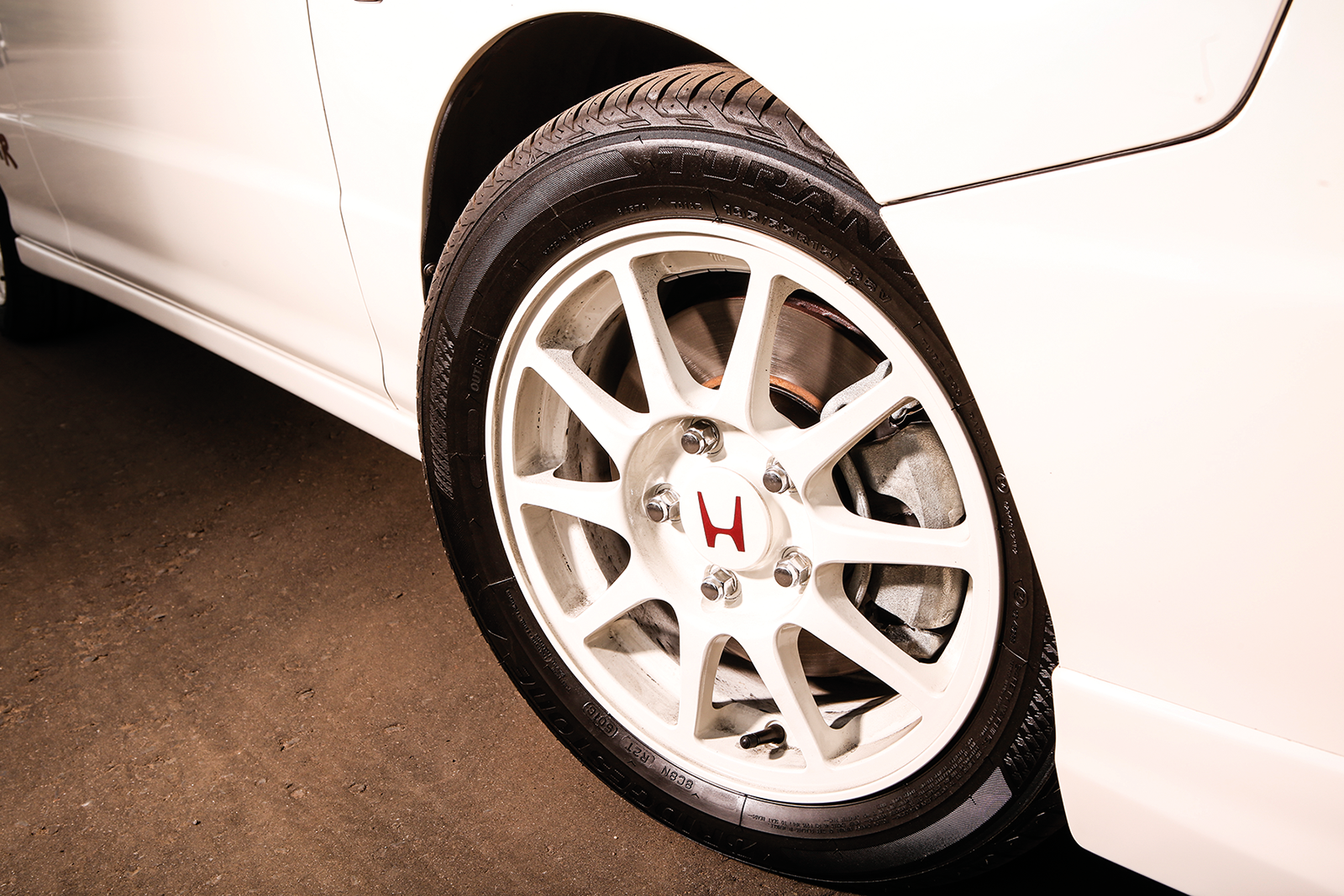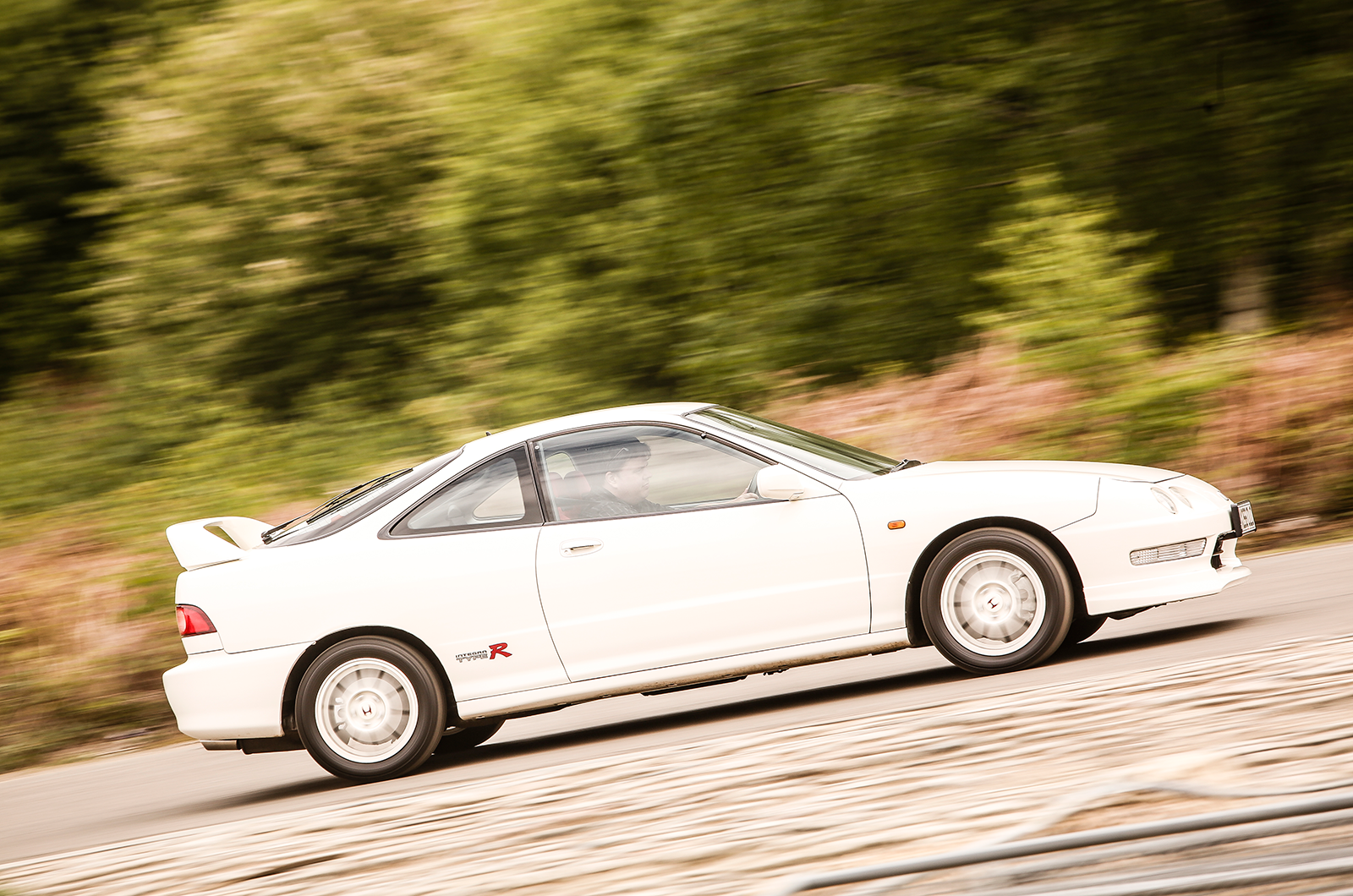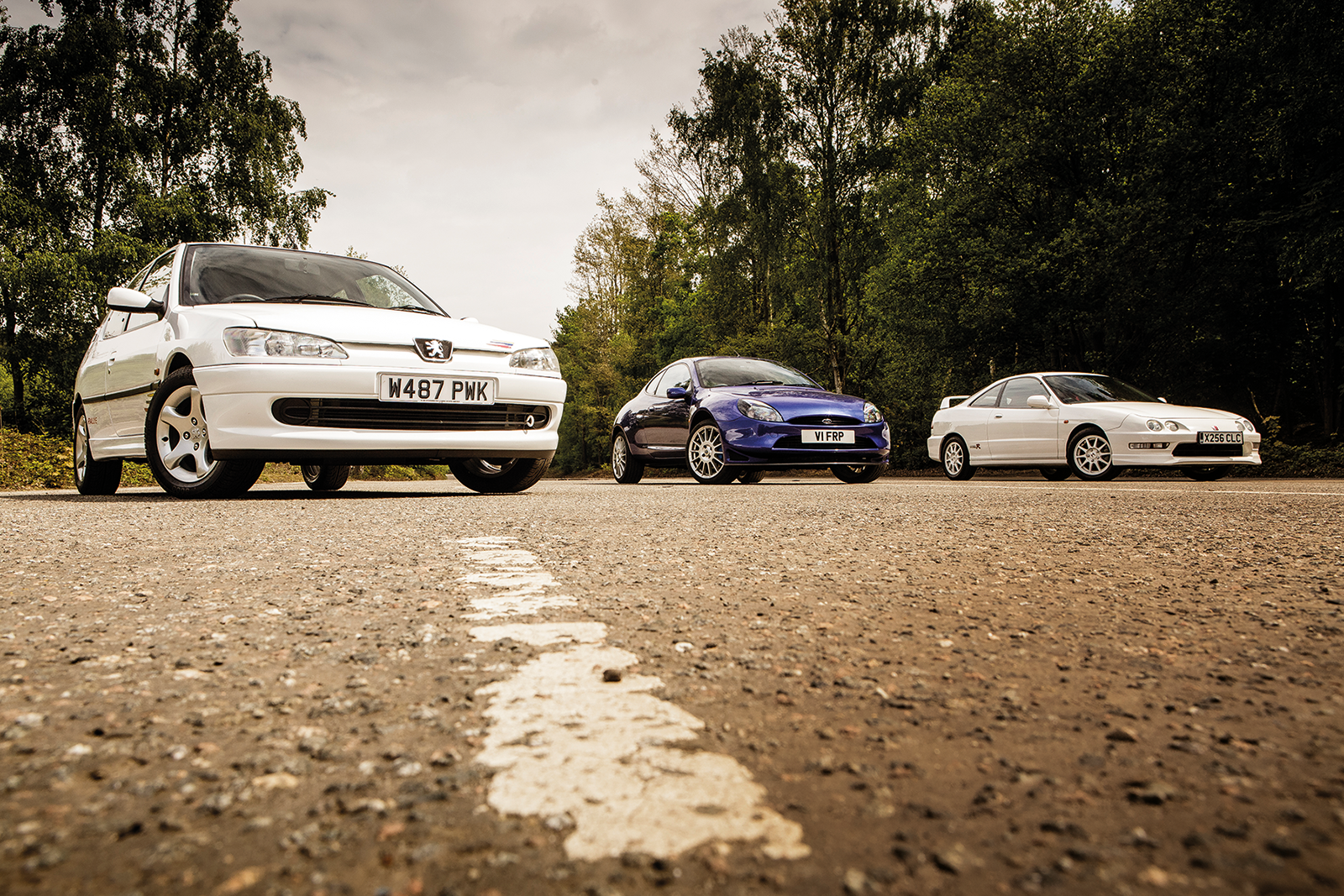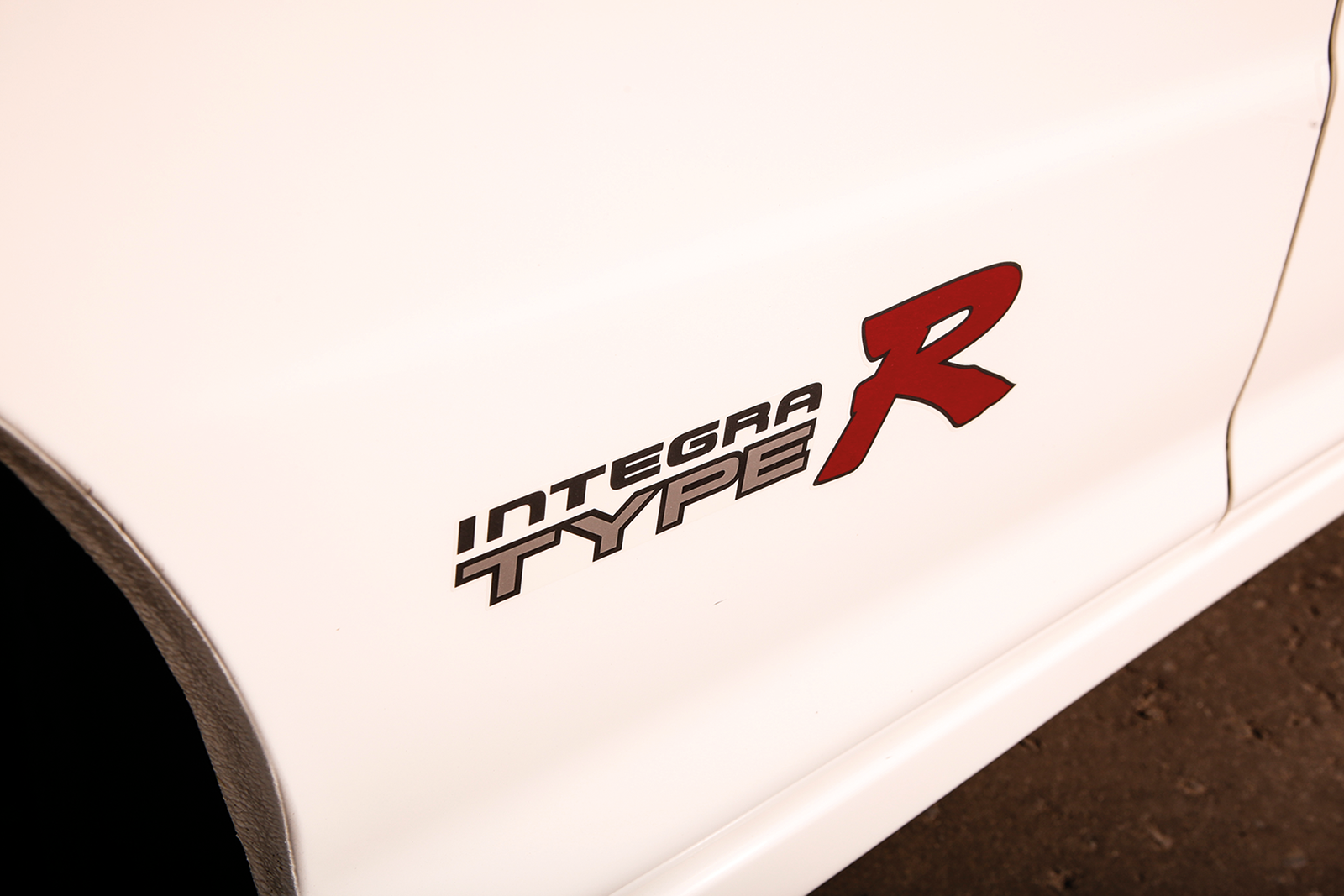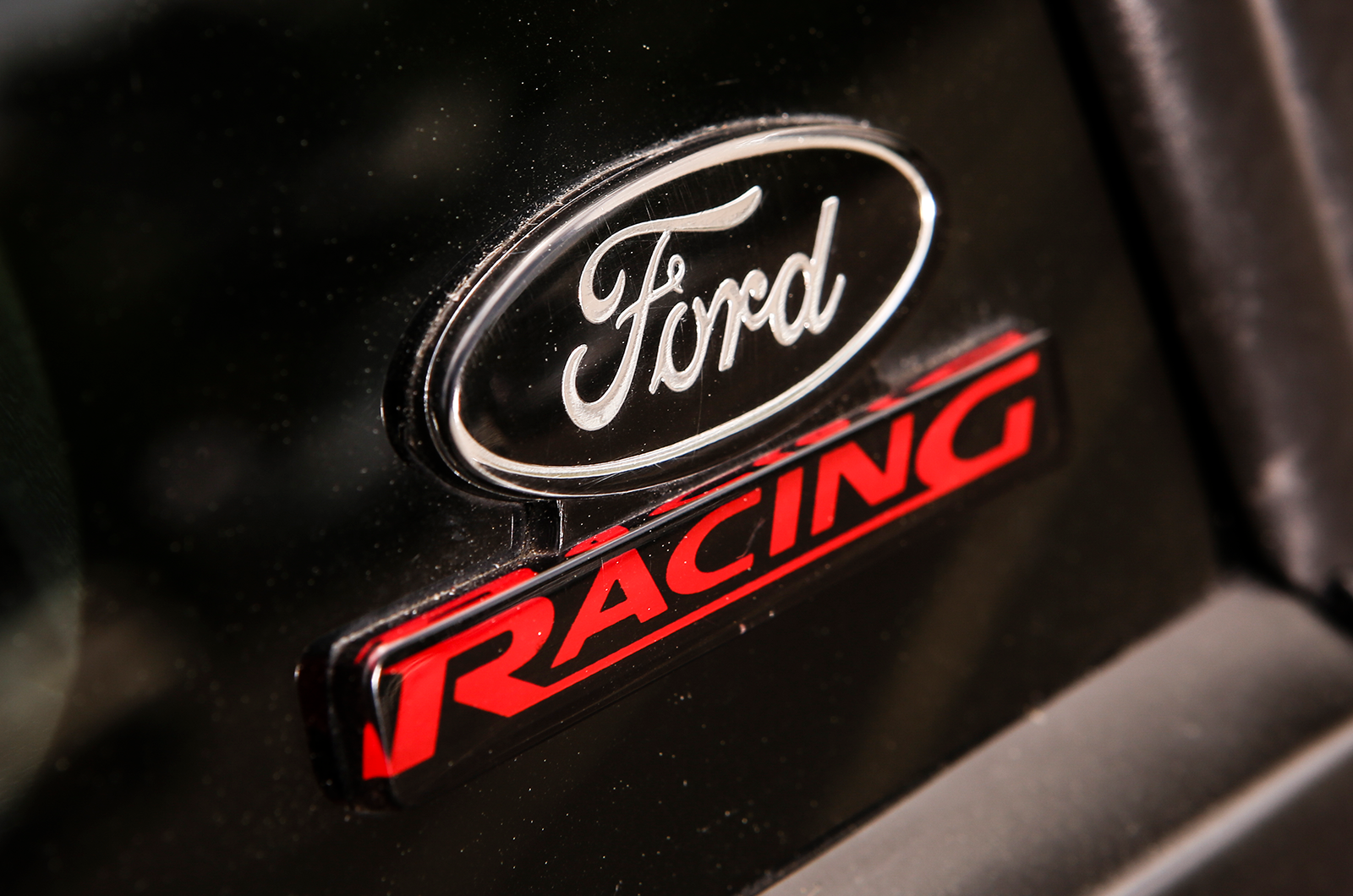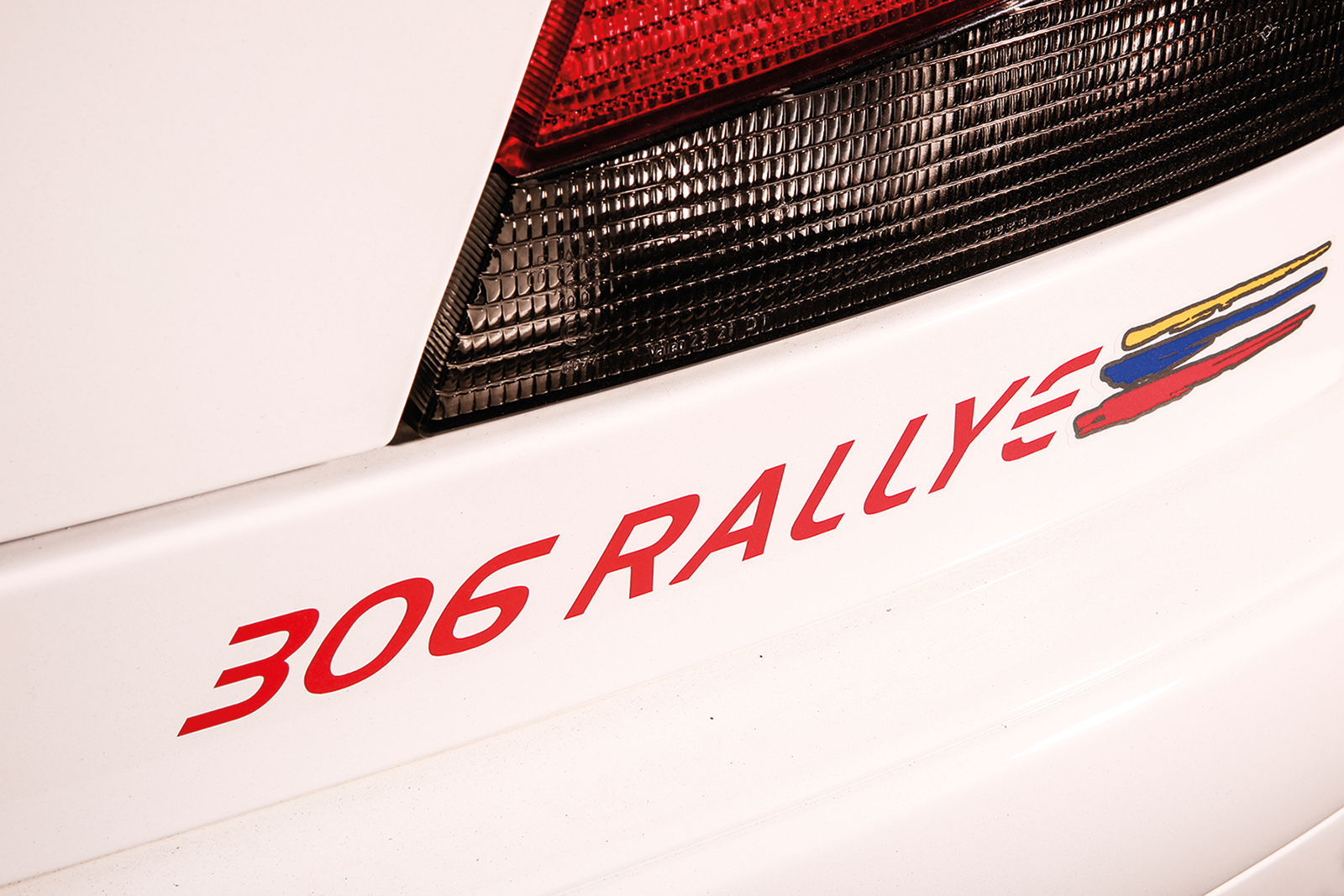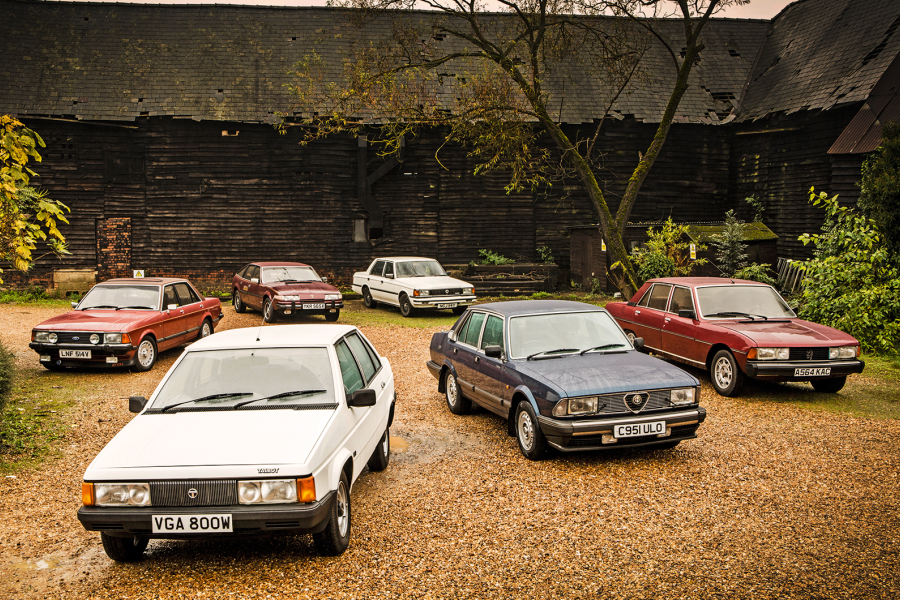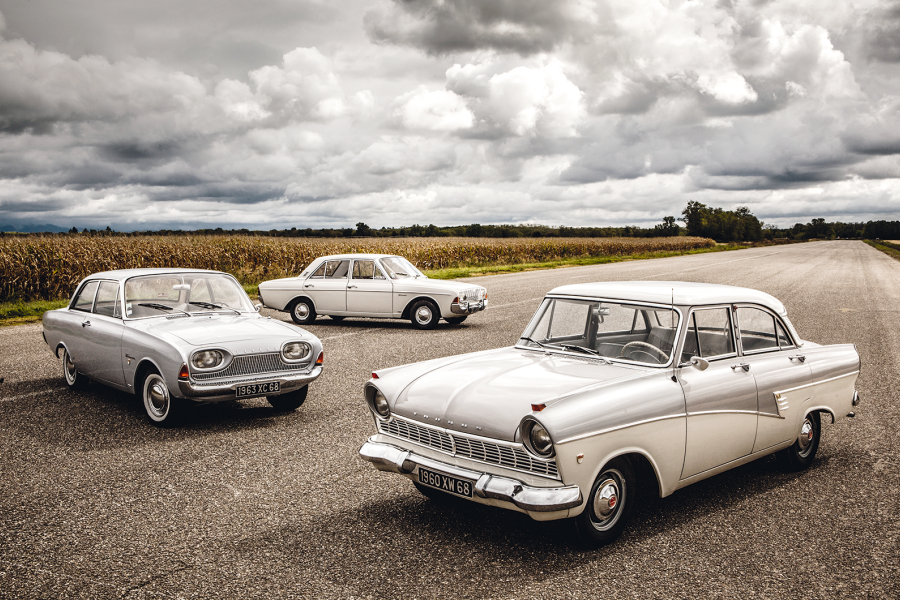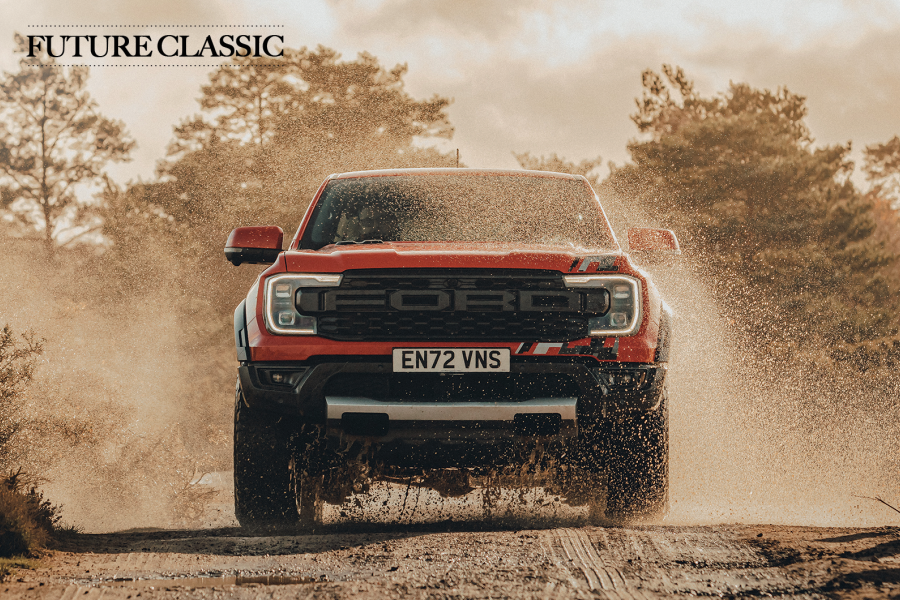The 306’s steering is not as quick as the Integra’s, but it is perhaps lighter, more polished and less textured.
The pay-off for the body roll is that the Rallye has the best ride here. If only the seat wasn’t so disinterested in lateral location.
It is also the most practical of the three and, thanks to its subtle appearance, I expect that it doesn’t invite the bottom-sniffing aggression of other road-users – something that the Honda’s pramhandle rear spoiler provokes.
Between 1997 and 2001, 1596 Honda Integra Type Rs were sold in the UK
The Honda punches far higher than its cylinder count suggests. Its note is urgent and savage; the higher the revs, the greater the stridency.
At 3-4000rpm, the Integra sounds like a mild-mannered bean counter, but above and beyond the 6000rpm step – where cam profiles change – it turns into a posturing rock god.
It gets louder and more intense with peak torque, just 131lb ft, being achieved at a giddy 7300rpm.
It realises 187bhp at 8000rpm, 500rpm shy of the 10,000rpm tacho’s redline. The B18C6 engine sounds so possessed, frenzied and crazed, you wonder how the block can contain such fury.
Both drive and steering are unaffected, remarkably, the front-end remaining undisturbed by the limited-slip diff, not darting hither and thither like a bloodhound’s nose.
Knuckles do not become bleached, palms stay dry and eyeballs remain in their sockets.
The double splitter disguises the Puma’s body height
Compared to a previous experience with a Racing Puma – not V1 FRP – on heavily cambered roads, the Integra remains beautifully behaved.
Above 4500rpm and the FPR starts to sing crisply, going on to peak oomph at 7000rpm, where the tacho ends.
Its steering is quicker than the Rallye’s, roadholding more plentiful, lean better controlled.
Its steering is beautifully harmonised with the keen front end, it’s incredibly forthcoming and well judged – although it does lose some of the standard Puma’s amiability thanks to its Charlie Chaplin boots.
Evocative rims for all three
The Ford still beguiles – it looks the part and, with a laddish fifth injector in the exhaust, it excitedly pops and chuckles on the over-run.
The Zetec SE – designed with Yamaha – revs eagerly, its fizzing waspish note has less basso profondo, torque and horsepower than either the Honda or the Peugeot.
What this 132bhp per ton Puma lacks in straight-line speed, it compensates for with greater mechanical grip.
Hurtle through the switchback cornering demands of the Snake handling course and the terrier-like Ford easily shadows the more powerful pair.
Our author sides with the Integra
Off track, we chat about the contenders. Chambers’ dad, detecting my fondness for the origami projectile, suggests that I’m “a Honda bloke”.
I deny it, but on reflection he’s right – although I’m probably closer to a Type R fundamentalist. Keep it lean, keep it simple and turbochargers, keep away. Yet this mantra applies to all of these classic motor minimalists.
Each makes me grin, yet for me it has to be the Integra.
It’s easy to be captivated by the underbonnet hullabaloo, but Honda would go further and higher, culminating in the stratospheric S2000.
A potent trio
What it wouldn’t beat, though, was its chassis’ blend of perfectly resolved steering, front-end alacrity, grip and faultless handling.
Actually, that isn’t fair – it isn’t just Honda that has not been able to surpass that combination, no manufacturer has.
Like the Mini and the Alfasud, Honda built itself a problem – a monumental machine that continues to cast a shadow over all that followed it.
Images: Tony Baker
Thanks to Carl Chambers; Club Peugeot UK; Ford Heritage; Honda UK; Daniel Williams
This was originally published in our August 2017 magazine
Factfiles
Peugeot 306 Rallye
- Sold/number built 1998-2000/500
- Construction steel monocoque
- Engine iron-block, alloy-head, dohc 16v 1998cc ‘four’
- Max power 167bhp @ 6500rpm
- Max torque 145lb ft @ 5500rpm
- Transmission six-speed manual, FWD
- Suspension independent, at front by MacPherson struts, anti-roll bar rear torsion bars, telescopics, anti-roll bar
- Steering power-assisted rack and pinion
- Brakes discs, vented at front, ABS
- Length 13ft 3in (4030mm)
- Width 5ft 6in (1680mm)
- Height 4ft 6¼in (1380mm)
- Weight 2644lb (1199kg)
- 0-60mph 6.9 secs
- Top speed 137mph
- Mpg 30.1 (claimed combined)
- Price new £15,995
Honda Integra Type R
- Sold/number built 1997-2001/1596 (UK)
- Construction steel monocoque
- Engine all-alloy, dohc, 16v 1797cc ‘four’
- Max power 187bhp @ 8000rpm
- Max torque 131lb ft @ 7300rpm
- Transmission five-speed man, FWD, LSD
- Suspension independent by coil springs, wishbones, telescopics, anti-roll bar
- Steering variable-assistance rack and pinion
- Brakes discs, vented at front, ABS
- Length 14ft 5in (4400mm)
- Width 5ft 7in (1705mm)
- Height 4ft 4½in (1335mm)
- Weight 2513lb (1140kg)
- 0-60mph 6.2 secs
- Top speed 145mph
- Mpg 32 (claimed combined)
- Price new £19,845
Ford Racing Puma
- Sold/number built 1999-2002/500
- Construction steel monocoque, alloy front wings
- Engine alloy, dohc 16v 1679cc ‘four’
- Max power 153bhp @ 7000rpm
- Max torque 119lb ft @ 4500rpm
- Transmission five-speed, FWD, LSD opt
- Suspension: front MacPherson struts, anti-roll bar rear torsion beam with strut-type coil and damper units, spacers
- Steering variable-ratio assisted rack and pinion
- Brakes discs, vented at front, ABS
- Length 13ft 1in (3984mm)
- Width 5ft 10in (1770mm)
- Height 4ft 3 ¾in (1315mm)
- Weight 2589lb (1174kg)
- 0-60mph 7.9 secs
- Top speed 126mph
- Mpg 35 (claimed combined)
- Price new £23,000
READ MORE
21 forgotten hot hatches of the 1980s
Unhinged hatches: Volkswagen Beetle RSI vs Renault Clio V6
19 classic hot-hatch legends
Simon Charlesworth
Simon Charlesworth is a contributor to Classic & Sports Car
